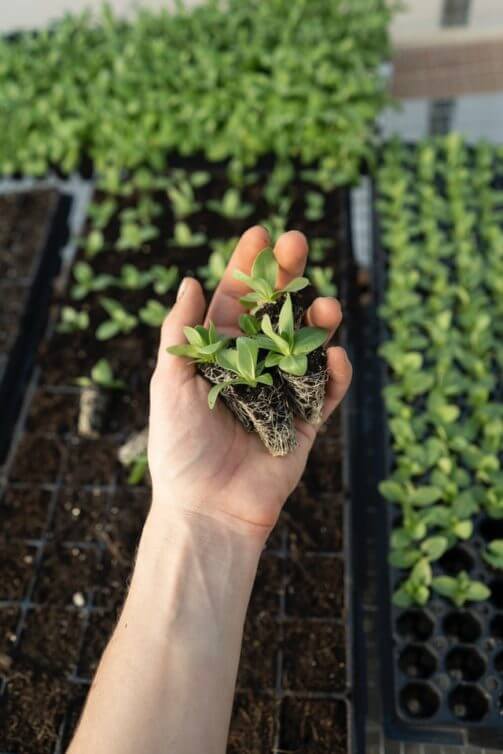Improper plant spacing is a common mistake in a lot of gardens. Beginners usually fall victim to this. They design their landscape with a lot of plants clumped together. The end result, the plants don’t grow healthy since they compete with each other for resources.
Don’t Overcrowd Your Garden?
Properly spacing your garden prevents your plants from competing for soil nutrients, sunlight, and water. The result is your plants grow to be healthier. Proper spacing can also make maintenance jobs such as weeding out and cleaning your garden easier.

Factors in Plant Spacing
Garden Space
Spacing your plants relies on how much space you have in your garden, the plants you intend to plant, and the design you are going for. After figuring out your garden space, you should decide on what proper garden layout you are going for. The most common layout is a series of parallel rows spaced at regular intervals. These intervals will provide space for your plants to spread and give you room to work with.
Soil
Depth and quality of soil are the biggest factors for proper plant spacing. The perfect soil for optimal growth is deep, well-draining, high in compost, and has the right pH for proper plant development. In this type of soil, roots can grow quickly. Plants can be grouped more closely in this type of soil.
When you have compact and shallow soil, make sure to give your plants extra space since their roots grow by spreading wide rather than going deep.
Plant Roots
You should also be aware of how much space each plant root needs and how its roots form.
Fibrous roots spread wide. Plants with fibrous roots often get the majority of their nutrients in the upper parts of the soil.
Taproots grow straight down drilling into the soil. However, if the soil is shallow, they grow wide instead and end up like fibrous roots in appearance.
Top Growth
When spacing plants, you should also be aware of how your plants grow above the ground. Make sure to provide enough space for its leaves to collect sunlight for photosynthesis. Some plants spread wide and some grow tall. You can’t group together plants that grow wide as they will be competing for space and sunlight.
Consult with Your Local Nursery
If you need expert advice on the proper spacing of your plants, it’d be best to consult the experts. Your local nursery should be able to provide good expert advice on the topic so don’t hesitate to ask.
Reasons for Proper Plant Spacing
Better Plant Health
Proper plant spacing promotes healthy plants. The soil spaces provided for each plant give them the nutrients they needed. If proper space is afforded for each plant, they won’t have to compete for nutrients and they will grow healthy.
Proper plant spacing makes weed management easier. If your plants are too close together, weeds that grow in between your planter may be more difficult to remove. Weeds will add even more competition for the nutrients in the soil.
Improved Disease Management
Just like in a normal room, one sick man can infect everyone else. Spacing out your plants reduces the risks of spreading diseases. Overcrowding reduces air circulation, which helps prevent diseases. This makes your plants more likely to be infected.
Arrangement and Orderliness
Pretty much sure you don’t want your garden looking like a jungle. With proper plant spacing, you can make arrangements in your landscape to make it more eye-pleasing. You can plant out trees in open areas of your landscape to provide shade during noon. Plant trees a good distance from the house. You can also group ornamentals to create some focal points in your landscape.
Proper plant spacing is essential to promote healthy plants and create a stunning landscape. How do you apply proper plant spacing in your landscape?
Article was originally from:
https://iotagarden.com.au/make-use-of-proper-plant-spacing-for-healthier-plants/
Comments
Post a Comment